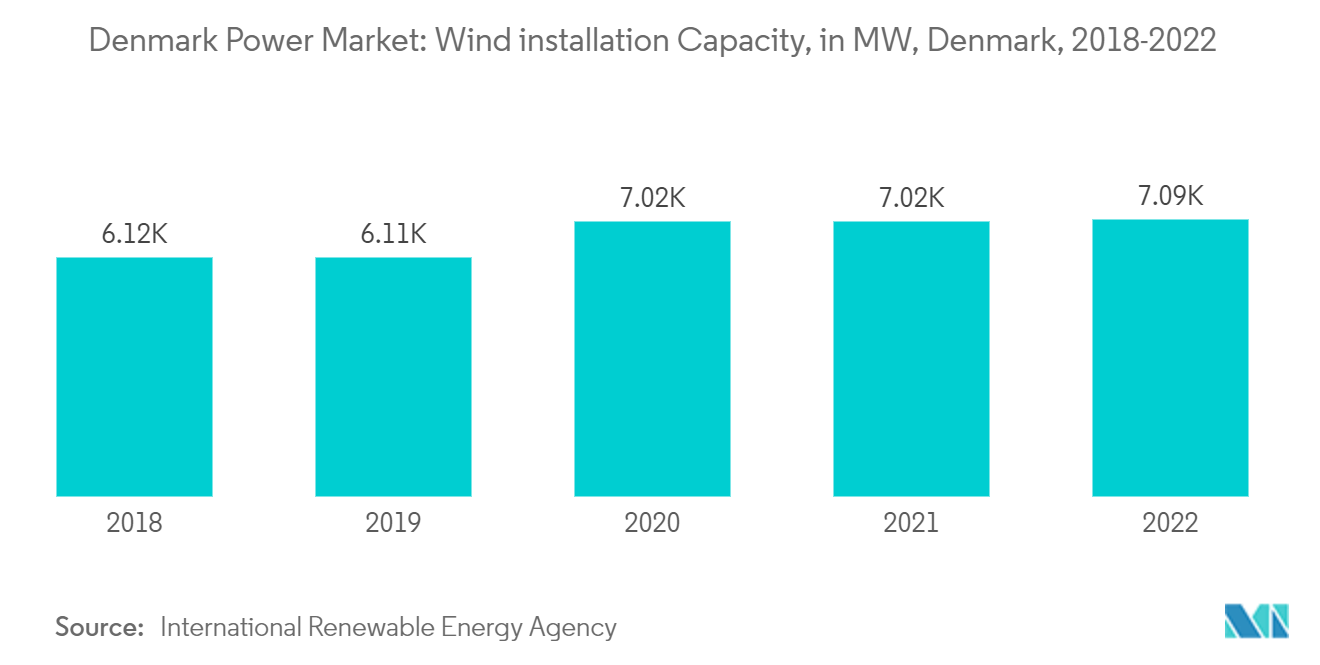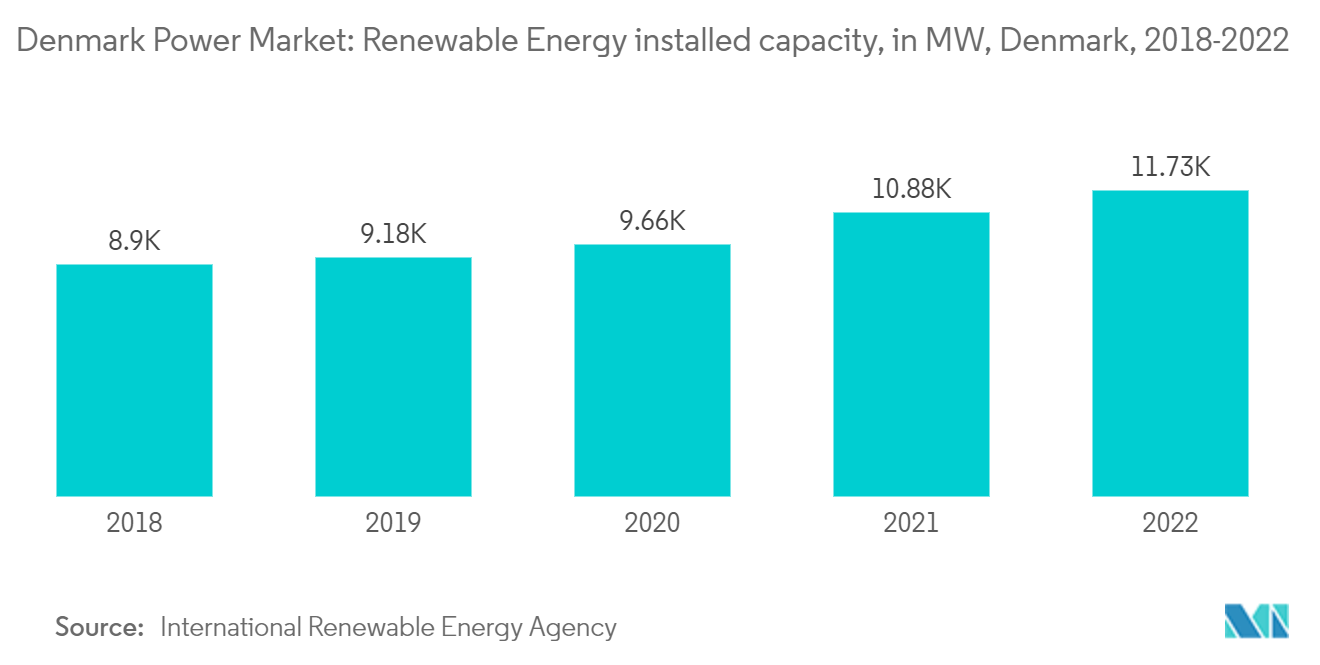Market Trends of Denmark Power Industry
Wind Energy to Dominate the Market
- Denmark is located in a region with favorable wind conditions, particularly offshore areas. The country includes a long coastline and shallow waters, ideal for developing offshore wind farms. The abundance of wind resources provides a reliable and sustainable energy source, making wind power a compelling option for electricity generation.
- Moreover, Denmark includes a long history of pioneering wind energy technologies and established a robust wind industry. Danish companies contain expertise in designing, manufacturing, and installing wind turbines onshore and offshore. This expertise and the country's favorable wind conditions positioned Denmark as a global leader in the wind energy sector.
- According to International Renewable Energy Agency, the wind energy installed capacity grew from 6123 MW in 2018 to 7088 MW in 2022. It represents a growth rate of more than 15%, signifying the increasing wind energy deployment in the country.
- Additionally, the Danish government is highly supportive of wind energy development. It implemented feed-in tariffs, subsidies, and favorable regulatory frameworks to encourage investment in wind power projects. These supportive measures facilitated the growth of the wind energy sector and created a conducive environment for wind power to dominate the market.
- For instance, in February 2023, the Ministry of Climate, Energy, and Utilities in Denmark intends to initiate tenders for an additional 9 GW of offshore wind capacity by the end of this year. This ambitious plan aims to increase Denmark's offshore wind capacity by five times, reaching a significant milestone by 2030.
- Therefore, as per the points discussed above, wind energy is expected to dominate the power market in Denmark.

Increasing Renewable Power Generation to Drive the Market
- Denmark includes a rich history of renewable energy development and utilization. In 2020, the Danish Parliament enacted the Climate Act, establishing ambitious targets to combat climate change. According to this act, Denmark aims to achieve a 70% reduction in greenhouse gas emissions by 2030 compared to the levels recorded in 1990. Furthermore, the country is legally bound to meet these reduction targets. Additionally, Denmark set its sights on attaining climate neutrality by 2050, marking a significant commitment to addressing the global challenge of climate change.
- The growing global awareness of the urgent need to address climate change and reduce greenhouse gas emissions. Renewable power generation, such as solar, wind, hydro, and biomass, offers a cleaner and more sustainable alternative to traditional fossil fuel-based generation. Governments, businesses, and individuals increasingly prioritize renewable energy sources to mitigate environmental impacts and promote a low-carbon future.
- According to International Renewable Energy Agency, the renewable energy installed capacity grew from 10882 MW in 2021 to 11734 MW in 2022. It represents a growth rate of more than 8%, signifying the country's increasing deployment of renewable energy.
- Moreover, the cost of renewable energy technologies, particularly solar and wind, significantly declined over the years. Improved manufacturing processes, economies of scale, and technological advancements led to cost reductions in renewable power generation. As a result, renewable energy sources became more competitive with conventional fossil fuel-based generation, driving their adoption and market growth.
- For instance, in December 2022, Denmark announced that it is constructing two energy islands that could expedite Europe's transition to green energy. These islands, comprising an artificial island in the North Sea and another on the island of Bornholm in the Baltic Sea, will be hubs for wind energy generation. Furthermore, there are plans for these energy islands to produce green hydrogen power in the future, showcasing Denmark's commitment to sustainable and renewable energy sources.
- Therefore increasing adaption of renewable energy is expected to drive the market during the forecasted period.


